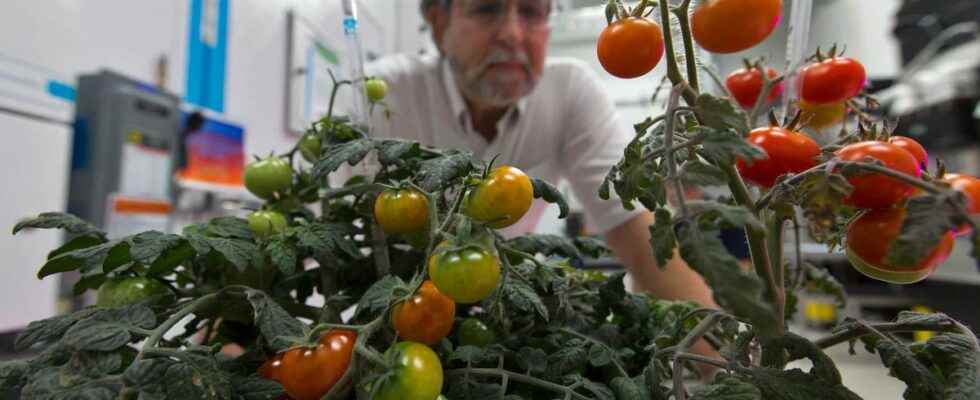the dragon freighter CRS-26 docked on November 27 at the international space station. He brings back several tons of material and experiences… Including cherry tomato sprouts. For the first time when they are ripe, astronauts will be able to taste them!
The Veggie experience continues to progress.
Who wants space tomatoes?
Good little dishes in perspective for the occupants of the international space station… If they manage to grow the tomato plants that have just arrived! Several sprouts of the “Red Robin” variety were part of the 3.5 tons of equipment, food and experiments within the last Dragon CRS-26 freighter. This is the “Veggie” test bed (Pick-and-Eat Salad-Crop Productivity, Nutritional Value, and Acceptabilityfor the official name) which receives the Veg-05 experiment, therefore aimed at growing cherry tomatoes.
Other types of sprouts are on the station, including other cherry tomatoes with the XROOTS experiment, but the difference is major: not only do the astronauts turn into indoor gardeners for several hours (which has very positive psychological effects), but with Veggie they have the right and even the recommendation to taste their production.
They are then responsible for noting and evaluating the tastes, texture, maturity, in short, to become experts in cherry tomatoes. But above all, they have the pleasure of eating fresh vegetables! Half of the harvest will be frozen to be studied on the ground, with a parallel harvest taking place on the premises of the Kennedy Space Center. After the first lettuce leaves in 2016, then the space sweet pepper tacos last year, here are the “space-cherry tomatoes”.
knowledge and patience
However, the astronauts will have to wait at least three months (90, 97 and 104 days) to harvest the first cherry tomatoes and bite into the fruit of their labor. Indeed, the Dragon CRS-26 cargo ship only arrived yesterday, November 27, less than 24 hours after taking off from the Kennedy Space Center with a brand new Falcon 9 rocket (the first stage of which landed successfully on a barge positioned on the Atlantic Ocean).
It’s also a new cargo capsule, likely the last for SpaceX, which reuses its orbital vehicles so they can fly about once every 18 months. This rotation carried, among other things, two new drop-down solar panels. And tomatoes, then. Who knows, these may not be the only vegetable plants that this Dragon capsule will transport (it will return to Earth in 5 weeks, at the beginning of January).
Still in the experimental stage
Food production in space is still in its infancy. Admittedly, it is possible to produce lettuces (several varieties), peppers and peppers, tomatoes, radishes… But it is still a question of experimenting, of understanding the development of the plants, the impact of the modifications generated by the spatial environment over several generations of plants from seed to maturity, to assess what are the best growing conditions, water needs, etc.
In short, everything that will one day make it possible to have a volume of a few cubic meters dedicated to agriculture in a station in orbit or on another celestial body. All of this will take time. Until then, don’t forget to pack some mozzarella and olive oil, to go with the cherry tomatoes!
Source : CNN

0